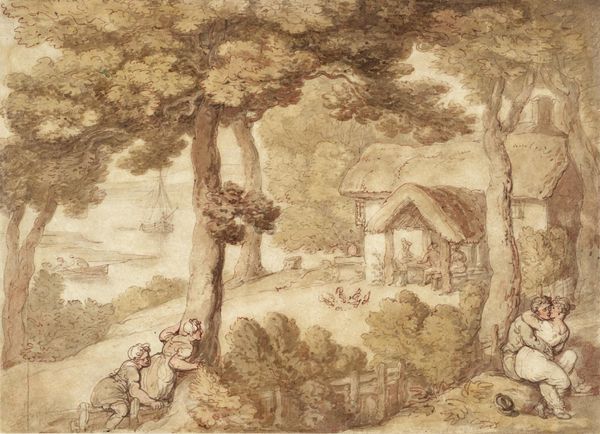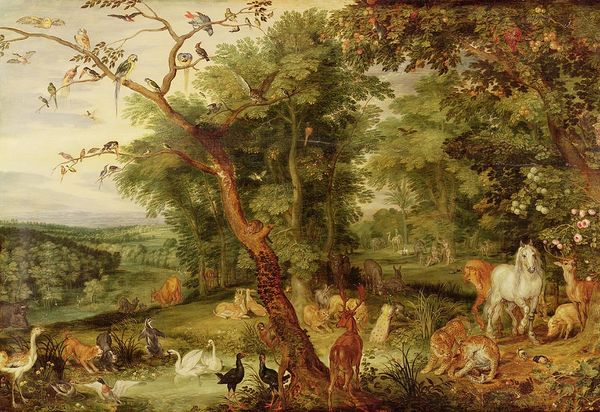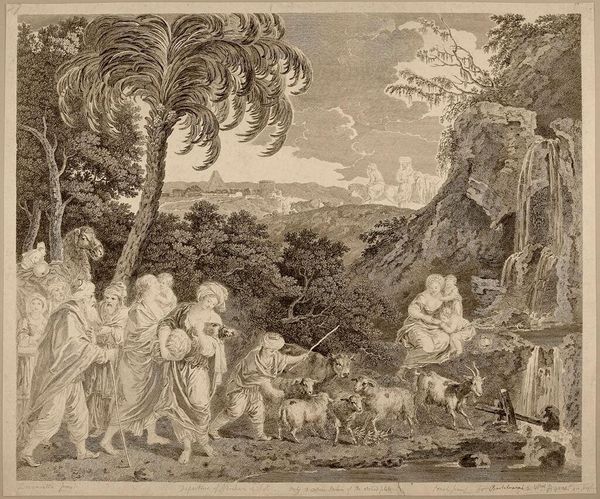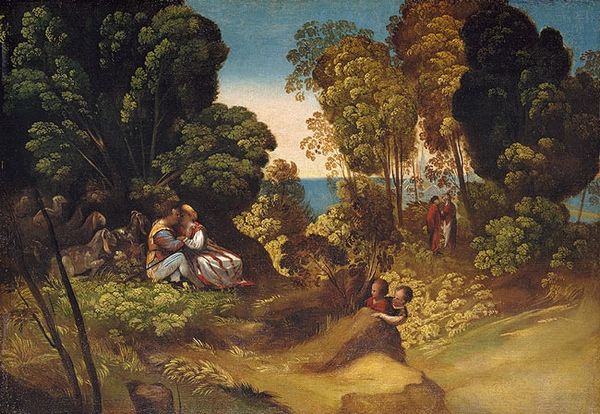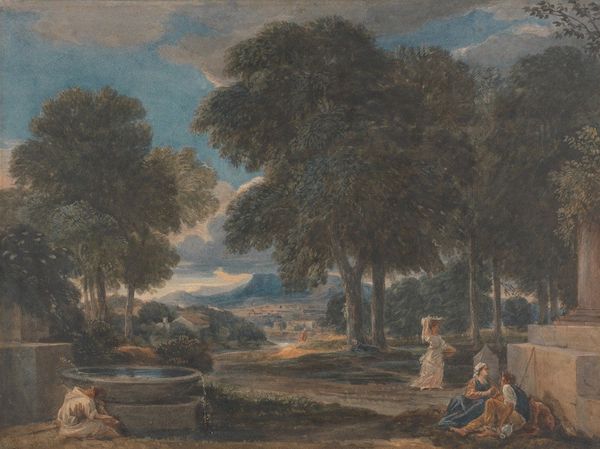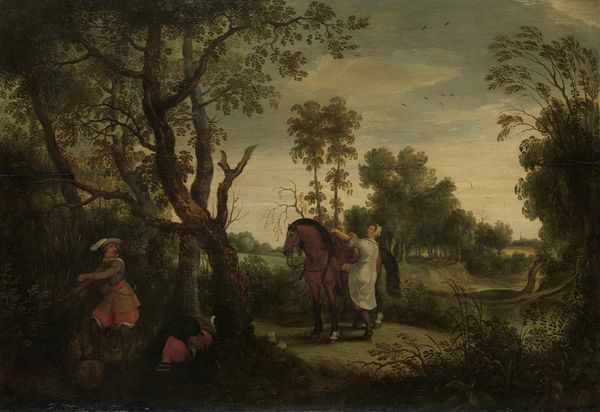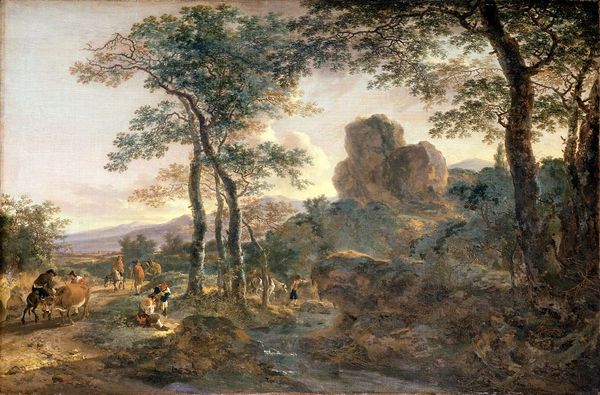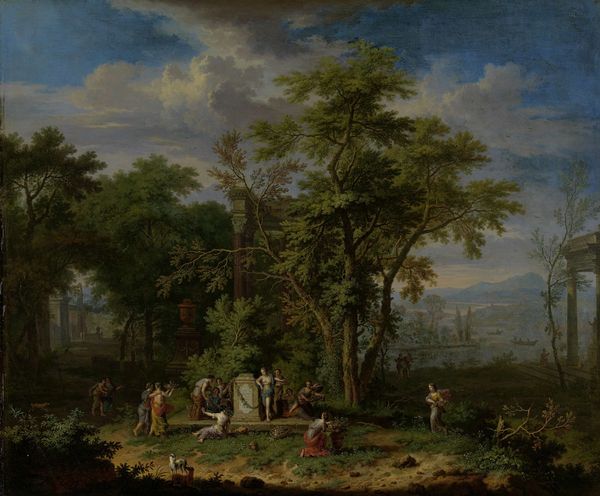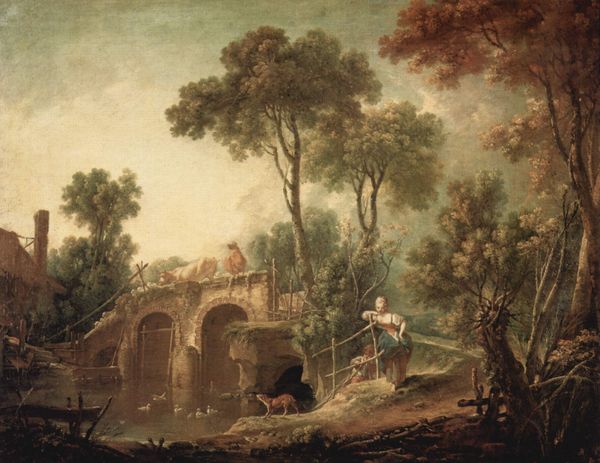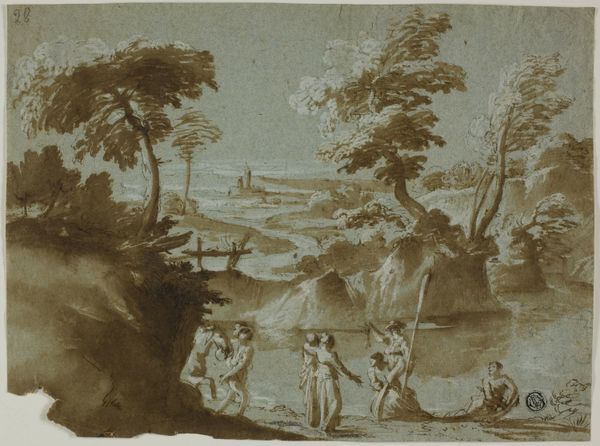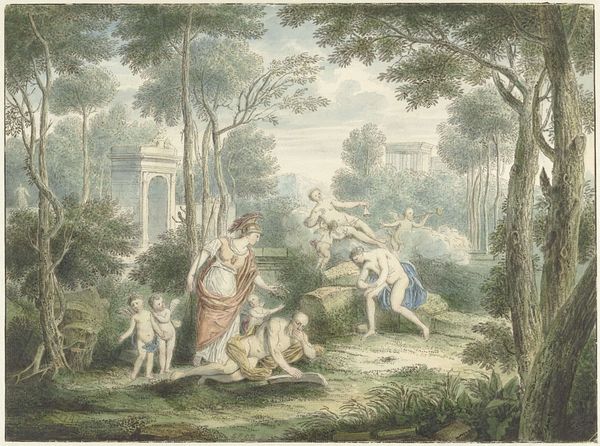
gouache, paper
#
gouache
#
gouache
#
landscape
#
figuration
#
paper
#
romanticism
#
genre-painting
#
decorative-art
Dimensions: Overall: 74 × 80 3/4 in. (188 × 205.1 cm)
Copyright: Public Domain
Curator: So, here we have "Young Girls Dancing before a Grotto," attributed to the House of Dufour, created sometime between 1815 and 1825. It's gouache on paper, a beautiful example of early 19th-century decorative art now residing here at the Metropolitan Museum. Editor: My initial reaction? A gentle daydream. It’s almost like peeking into someone's idyllic fantasy – a cross between a theatrical backdrop and a scene from a Jane Austen novel if it were filtered through a Pre-Raphaelite sensibility. Curator: Indeed! Dufour was renowned for scenic wallpapers, effectively bringing the picturesque landscape indoors. This piece reflects the era's fascination with both classical motifs and Romantic ideals of nature. Think of it as a status symbol, broadcasting cultivated taste. Editor: That makes sense; there’s something inherently 'staged' about it. It's not just the dancing nymphs but the arrangement of figures. But still… it makes me think about artifice versus nature, and how often we blur those lines for comfort or beauty, or for some weird ideal! Curator: Exactly. And consider the grotto itself. It’s both a natural formation and a designed space, mirroring society's attempt to manage and refine the wild. The figures, placed within that setting, are not simply 'dancing' – they are enacting a specific vision of leisure. Editor: You know, looking closer, there’s something a bit melancholic. That solitary figure in the corner, draped in orange fabric; feels detached, even mournful. I wonder if that’s intentional or if it's just my overactive imagination? Curator: Art, ultimately, is in the eye of the beholder. Your interpretation speaks to the power of art to evoke emotion and invite reflection beyond its historical context. We can know something was made for wallpaper and that does not prevent it being profound. Editor: Absolutely. It started as background decoration but seeing it now—separated from the walls it was probably glued to— it is its own unique expression, more complicated, more poignant somehow. Curator: Well put! A reminder that the function of art evolves. Editor: I'll never look at wallpaper the same way! Curator: That's the power of art history—or any art, to bring that light, right?
Comments
No comments
Be the first to comment and join the conversation on the ultimate creative platform.
